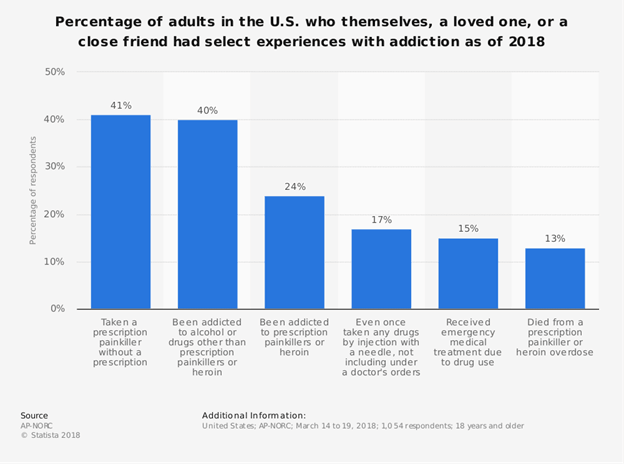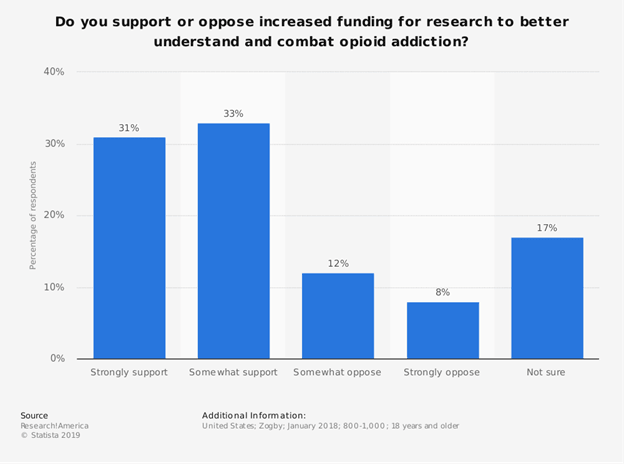Trends and Statistics
5 Encouraging Trends in Addiction Treatment

Encouraging trends in addiction treatment? They do exist. Here are 5 positive addiction trends in 2021 to give you hope:
It would be fair to say that most of the news about addiction is bad. The overdose epidemic worsens daily, mental health overall is increasingly compromised of late, and the incidence of substance use disorder is on the rise everywhere we look. In short, it is high time for some good news. Fortunately, amongst all the bad, there are some encouraging trends in addiction treatment:
1) Public Perception Is Becoming More Positive

Addiction affects 1 in 3 households in the United States, and because of that more people are beginning to understand that addiction is not a moral failing, but a disease. There is an increased empathy amongst the public, which is leading to changing opinions on how to approach substance use disorders.
A majority of people support increased funding to understand and combat opioid addiction, for example.

One of the very few silver linings in the increase of substance use disorder is that we increasingly understand the need to combat the disease, not the sufferers.
2) Encouraging Trends in Addiction Medicine
One of the ways that we can combat the disease more effectively is through advancements in medicine. In addition to existing evidence-based treatments, there are advancements on the horizon in the addiction medicine world.
One of the more exciting avenues of research underway is around the orexin system, which has been linked to the motivation to use in those who suffer from substance use disorder.
Targeting the orexin system shows a lot of promise in mitigating the urge to use long-term. Even more exciting, existent medications used to treat insomnia already target the orexin system and have the potential to be modified or used as is to treat addiction. (Matzeu, 2020)
In addition to the advancements in the medication itself, the addiction medicine community now has an ACGME medical specialty under the American Board of Preventative Medicine, which means that future doctors and nurses can study and specialize in the understanding and treatment of addiction. It means that the medical community is beginning to prioritize addiction treatment, which is very exciting news.
3) Harm Reduction Is Working
Additional exciting news: efforts to reduce harm in the substance use communities have been working. Organizations like Solace Foundation save lives from overdose every day through the education about and distribution of Narcan (also known as naloxone).
Clean needle exchange programs across the country can drastically reduce the incidence of intravenously passed diseases. (Logan & Marlatt, 2010)
A growing number of states have Good Samaritan laws, which prevent those who call 911 reporting overdose from being prosecuted for their own minor drug infractions.
While harm reduction progress may seem slow to those in the field, real substantive change continues to make an impact.
4) Laws Are More Supportive than Ever
As the public becomes more and more understanding of substance use disorders, the laws follow suit. Public officials and measures are beginning to support substance use disorder sufferers to a much greater degree.
There has been an increase in funding for opioid use disorder research, for example. Students applying for aid through FAFSA will no longer have to disclose whether they have ever been guilty of drug-related charges. Those who would otherwise be prevented from student aid will be able to pursue secondary education regardless of the crimes of their active addiction.
In perhaps the most stunning display of legal changes, Oregon recently decriminalized minor drug possession. Those who formerly would have been prosecuted and imprisoned will now be placed in treatment as appropriate.
In short, the tides are beginning to turn in public policy toward substance use disorder.
5) We Know More than Ever Before
More than ever, people are embracing evidence-based treatment. Treatment centers are increasingly embracing cutting-edge medications to aid in the battle against substance use disorders.
Addiction recovery treatment is constantly changing, and our understanding of what contributes to a successful long-term recovery is growing. Here is some of what we know:
Evidence-based treatment has a high rate of success
Addiction recovery is a holistic process
Community has a large influence on a person’s continued sobriety
Self-motivation is amongst the biggest factors that predict a person’s successful recovery
Overall, our understanding of what factors contribute to long-term recovery grows all the time. There are encouraging trends in addiction treatment when you know where to look.
It can be overwhelming to read the news, particularly when we see the numbers on substance use disorder, overdose, and more. However, no matter how bleak it looks, change is still happening. Let the small seeds of progress give you hope, as it has us.
References
Logan, D. E., & Marlatt, G. A. (2010, February 2). Harm Reduction Therapy: A Practice-Friendly Review of Research. National Center for Biotechnology Information. https://www.ncbi.nlm.nih.gov/pmc/articles/PMC3928290/
Matzeu, A. (2020, April 10). Targeting the Orexin System for Prescription Opioid Use Disorder. MDPI. https://pubmed.ncbi.nlm.nih.gov/32290110/

We’re Here To Help You Find Your Way
If you or a loved one is struggling with addiction, there is hope. Our team can guide you on your journey to recovery. Call us today.
Written by
 Brian Moore
Brian MooreContent Writer
Reviewed by
 Jeremy Arzt
Jeremy ArztChief Clinical Officer
Trends and Statistics
August 18, 2021
